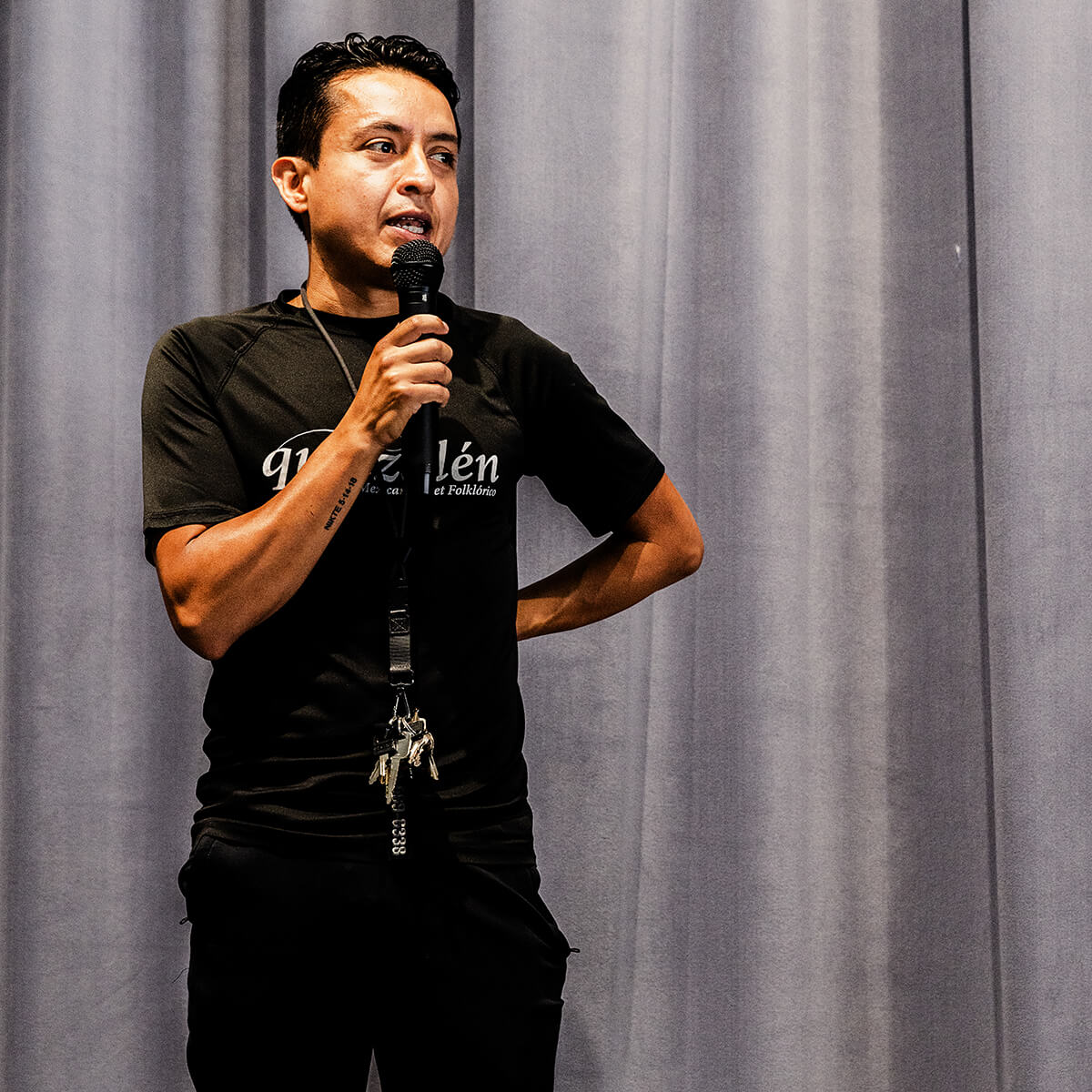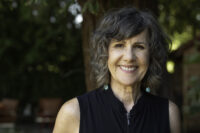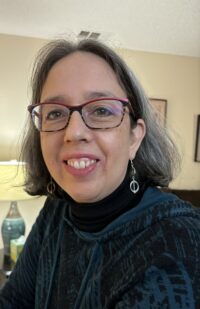In the spring of 2024 Víctor Ferrer, by unanimous vote of the Fine Arts Commission, was named Treasure Artist of Sonoma. The Executive and Artistic Director and maestro of Quetzalén folkloric dance group, Ferrer was honored for his contribution to the Latino community, bringing their heritage to the students who learned and performed their traditional dances; and his contribution to the whole community through performances at the Plaza, the Community Center, Larson Park and La Luz for Cinco de Mayo, Mexican Independence Day, Day of the Dead and other events.
Anna Pier spoke with this young (38) artist, about his latest venture, a dance concert integrated into the pre-Hispanic Aztec legend about the Underworld, or “Mictlán, and the spirit’s journey through nine stages to eternal peace. The original production will be presented Saturday October 5 and Sunday October 6 at 1 PM at The Sebastiani.
Your production Mictlán tells the story of a journey. Tell us about your journey to this moment in time. I was born in México, DF – Mexico City. I had the great fortune to be raised all over Mexico, thanks to my stepfather’s job which moved him just about every year. I am grateful I got to know so much of my country, from north to south, from Baja California Norte to Yucatán. In 2001 I came with my mother and siblings to the U.S., to Petaluma, where I went to Casa Grande High School.
When did you come to Sonoma? In 2005 I was hired as a reporter for El Sol de Sonoma, by editor Rómulo Hernández, a well-known journalist. El Sol was the Sun’s sister paper. I was 18. My only experience was having published, for a couple of years, a newsletter in my ESL class at high school, so I gladly worked without pay, for the opportunity to learn journalism in Spanish. When the editor departed abruptly, the publisher Bill Hammett, gave me the chance to do that job. People told me that I was the youngest newspaper editor in the country. I had that job for several years.
How did you get to folkloric dancing? I have always loved to dance. Salsa dancing when I was editor of El Sol. Then I joined a Sonoma folkloric dance group for young adults that had started as a Sonoma High senior project. I have been with this group, Quetzalén, ever since, dancing and taking on various roles, always as a volunteer – designing costumes, graphic design (after I graduated that program at SRJC); and then director.
Your personal journey here in the U.S.? Because I came to this country with my mother, undocumented, I was always worried about my status. So in 2012 when President Obama created D.A.C.A., Deferred Action for Childhood Arrivals, I applied immediately. I became a “Dreamer.” After I married, I followed the steps to citizenship, supported by Sonoma Immigrant Services.
Quetzalén is now a group for youth. In 2021, I took the risky decision to change the concept of Quetzalén, making children the priority. I became the maestro and director. I wasn’t wrong – it has been very successful, with currently 105 children ages 4 -18 performing dances from all over México – places I lived while growing up. They are learning about their cultural heritage. This year our school district began to sponsor the classes, which are always gratis.
Any other new things with the group? For the second year, we have a collaboration with the Sonoma Conservatory of Dance, for all our young folkloric dancers to learn some fundamentals of classical ballet. It improves their dancing tremendously. The Catalyst Fund first made this possible, and now the Education Foundation is sponsoring it. We also have a collaboration with Luther Burbank Center, which sends teachers and musicians to our La Luz-sponsored summer dance and mariachi camps.
Tell about your family. My wife Carmen and I met when we both were working at a summer English camp for children. She had joined Quetzalén around that time, and we danced in the young adult group for years. We have a six year old daughter, Nikte, who is in first grade and dances with the group, and a toddler son, Víctor Antonio, who comes to work with me and watches me teach.
I want to emphasize that none of this could happen – the ongoing Quetzalén classes, and now the whole Mictlán production – without the invaluable efforts of my wife, Carmen. She is our Coordinator, in charge of communication with the Quetzalén families, in charge of all aspects of our costumes, and much more. And she puts up with me.
Talk about the creation of this production Mictlán. Vanessa Carrillo, a wonderful dancer who came up through Quetzalén, is Associate Artistic Director. We wanted to create a context for the dances we perform, and to give deeper cultural meaning to the Day of the Dead celebrations all around the Valley. We shared the vision for this production, created it, and she has been a major part of making it happen. We hope will become an annual tradition.






Be First to Comment